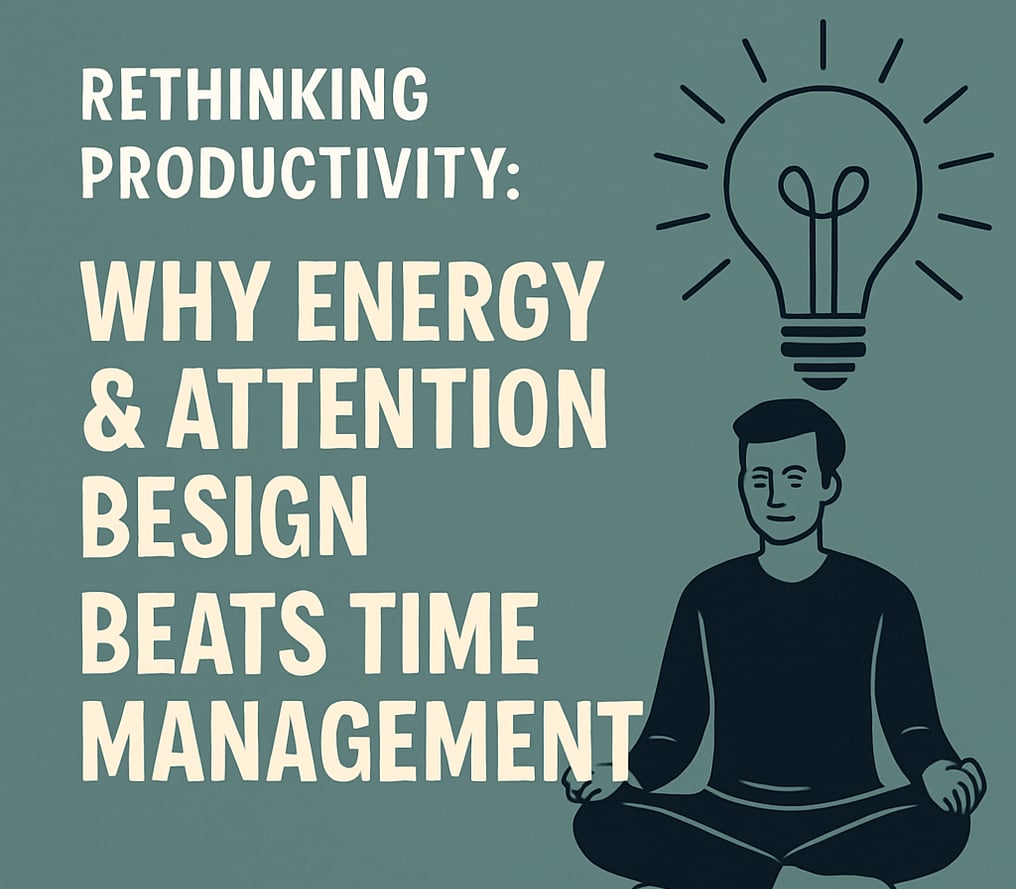Rethinking Productivity: Why Energy & Attention Design Beats Time Management


We’ve long been taught to manage our time — slice up our calendars, cram in priorities, and chase “efficiency.” But time, as it turns out, is a poor unit of productivity. The real driver of meaningful work isn’t how many hours you have — it’s how you show up in them.
That’s where energy and attention design comes in.
Smart professionals are beginning to organise their weeks around their natural energy rhythms and focus zones, not arbitrary 30-minute blocks. They know that two high-focus hours in the morning can outperform an entire distracted afternoon. So they optimise for flow, not filling time. This means:
Protecting peak hours for deep, high-impact work.
Scheduling admin and reactive tasks during natural dips.
Building in open space to reset, think, or create without friction.
More than that, they recognise attention as a finite, fragile resource — one that requires curation, not just endurance. Notifications are silenced, Slack boundaries are set, and meetings are batched to reduce cognitive switching. Their calendar becomes a canvas for deliberate attention, not just availability.
This shift from time to energy isn’t just a productivity tactic — it’s a philosophy. It says: Your best work deserves your best energy. And designing your week with that principle in mind isn’t indulgent — it’s essential.
Because in the end, it’s not how much time you spend. It’s how well you direct your energy toward what matters most.